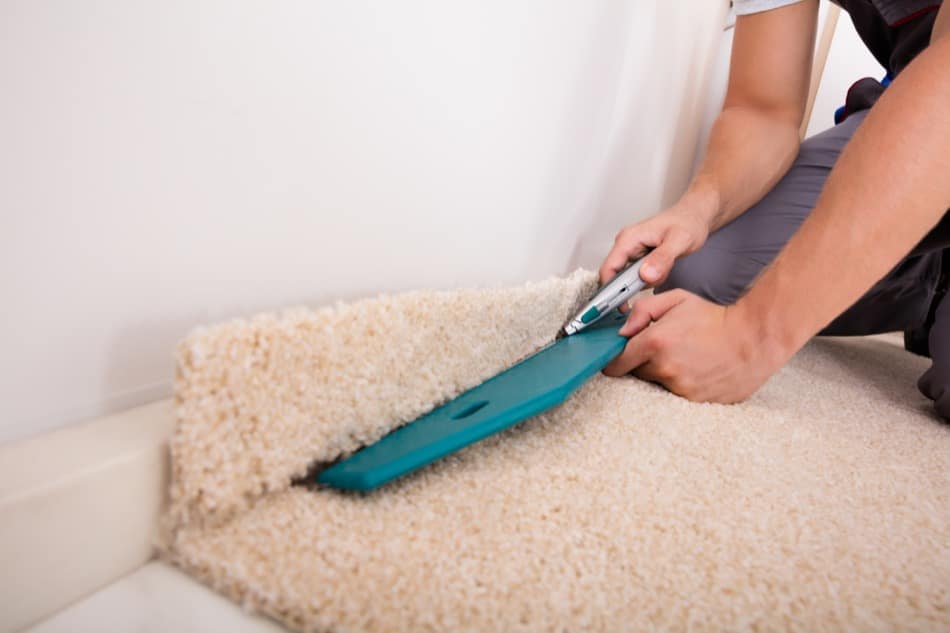
What Kind of Carpet Is Right for Your Home?
 You have many options in the different types of flooring or carpeting for your Ocean County home, which can have a big impact on how comfortable it is and how it looks. In addition, some types of carpeting wear better than others. If you’re a homeowner who is thinking about replacing your home’s carpeting, it’s important to choose the right type. Here’s what you need to know.
You have many options in the different types of flooring or carpeting for your Ocean County home, which can have a big impact on how comfortable it is and how it looks. In addition, some types of carpeting wear better than others. If you’re a homeowner who is thinking about replacing your home’s carpeting, it’s important to choose the right type. Here’s what you need to know.
Loops or No Loops?
Some carpeting is looped, some is not. Unlooped carpeting tends to be soft and luxurious. In parts of the home like the bedroom, where you may spend a lot of time barefoot, unlooped carpeting represents the height of softness and comfort.
Looped carpeting tends to be tougher, more durable, and less soft. Looped carpeting, like berber, hides dirt and debris better than unlooped carpeting, so it’s more durable and longer-lasting. This is an excellent type of carpeting to install in your living room, hallway, on your stairs, and in children’s bedrooms.
Different Materials
By far, the most durable and long-lasting carpeting is made of nylon. Nylon is known to be especially stain-resistant, so it’s popular among homeowners with children and pets. Nylon is also the most popular type of carpeting material, so it’s found in carpeting showrooms and warehouses everywhere.
Wool is gaining popularity as homeowners seek to make their homes from natural fibers and sustainable construction materials. Wool is long-lasting but may not be very stain-resistant. Wool must be cleaned regularly in order to maintain its beauty.
Polyester carpeting comes in a variety of colors, textures and styles. People often appreciate polyester carpeting because it is environmentally friendly and can be made from recycled materials. However, polyester is not as durable as nylon and not as common.
Density
The denser the carpeting, the easier it will be for the carpeting to repel dust. Dense carpet is more resilient, more durable, and has a longer service life. The denser the carpeting, the harder it is to touch the backing that holds the fibers together. People who want to know how dense carpeting is can test this by pushing their hands into the carpet fibers to see how far they can go.
Color Considerations
One of the things that homeowners must consider when trying to select carpeting is the color. Light and bright solid colors tend to show dirt more easily. Carpeting that is darker or colored like the dirt itself (such as beige) is less likely to show dirt and will last longer overall.
Carpets by Way of Making:
-
Woven – Woven carpets are made on a loom. There are two types of woven carpets – loop pile (also called Berber) and cut loop (or plush carpet). Woven carpets often incorporate a vast range of colored yarns, which allows the making of intricate rugs. Woven carpets are usually the most expensive ones due to the longer time they take to make. Carpet weaving is popular in India, Pakistan and Arabia. The fibre here is usually loose, so you’ll need to choose the carpet cleaning method wisely.
-
Needle Felt – Needle felt carpets are the most technologically advanced. With the help of barbed and forked needles, the synthetic fibers are felted and intermingled together, forming an extremely durable rug. Needle felt carpets are perfect for places with high traffic like restaurants and hotels. They withstand to dirt and you can steam clean them.
-
Knotted – The structural weft threads alternate with a supplementary weft that rises at right angles to the surface of the weave. This supplementary weft is attached to the warp by one of three knot types, such as shag carpet, to form the knotted pile of the carpet. Knotting by hand is most prevalent in oriental rugs and carpets. Kashmir carpets and the largest carpet in the world are also hand-knotted.
-
Tufted – Tufted carpets are those whose pile is injected into a backing material, which is then bonded to a secondary backing material to provide stability and create a sturdy, durable carpet. The pile can be sheared in places to achieve different textures. Tufted carpets are predominantly made for domestic needs. It’s a pretty straightforward and affordable process, and you can use heavy-duty cleaners on such fabrics.
-
Flatweave – Carpets using the flatweave technique are made by interlocking warp (vertical) and weft (horizontal) threads. Types of oriental flat woven carpets include kilim, soumak, plain weave, and tapestry weave.
-
Hooked Rug – A simple type of rug created by pulling fabric strips through the meshes of a sturdy hessian (burlap). This process is called rug hooking. Hooked rugs are made mainly as a handicraft.
Work With a Reputable Carpeting Professional
When the time comes to replace carpeting in your home, work with a reputable carpeting professional. Installing high-quality carpeting helps boost your home’s value.



